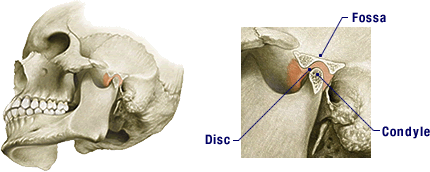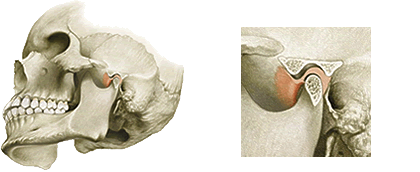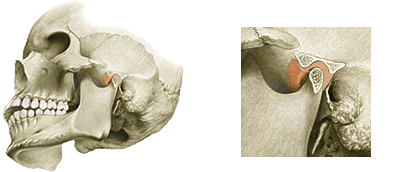Mandibular Position (Jaw Position)
There is a direct relationship between tooth fit and the TMJs. As shown in the figure, the mandible (lower jaw) holds the teeth in the upper part of its body and the two ends (condyles) make the TMJs with the temporal bones. One of the important roles of orthodontic treatment is to obtain harmony between the joints and tooth fit (occlusion). Functionally, it is important that the intercuspation of the upper and lower teeth is achieved with the condyles seated in the fossae (concave parts of the temporal bones). The lack of this harmony has adverse effects not only on the teeth themselves, but tooth-supporting tissues (gums, tooth-supporting bone and ligaments surrounding the root), TMJs and muscles. It also negatively affects post-orthodontic stability.
Patients with TMJ disorder (TMD) may experience joint sounds (e.g. clicking, crepitus), difficulty of mouth opening and joint pain upon jaw movement. TMD may be associated with tension headache, instead of joint pain, as observed in many patients.
What is good occlusion?

Ideally, the upper and lower teeth should fit with the condyles well seated in the fossae without any laxity.
Our group places the highest priority on the stability of the TMJs, which becomes a foundation for aligning teeth in the mouth.
What is bad occlusion?

The condyles are displaced and unstable when the teeth fit.
Condylar or disc displacement cannot be seen in the mouth. The members of our group examine the occlusion using an articulator and an instrument called CPI that measures occlusal discrepancies at the joint level. A splint is used, if needed, to uncover the hidden discrepancies, as described below in more detail.

The joints were stabilized but the upper and lower teeth no longer fit, a change often observed after splint therapy.
